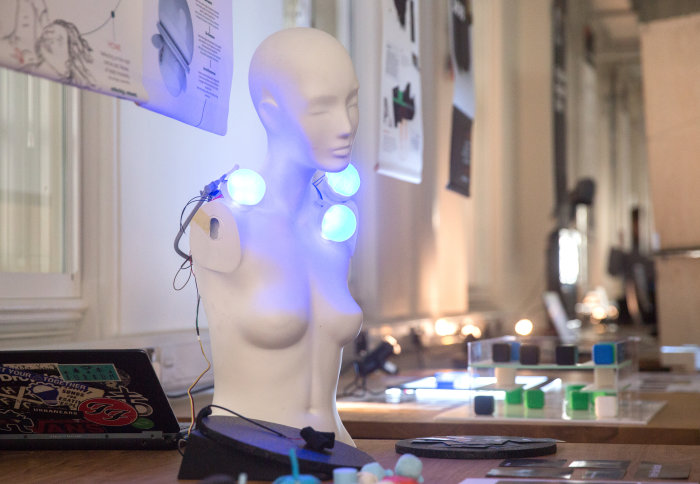
Leah Pattison is imagining a future form of social media involving tiny personal drones.

From mood-sensing drones to next-generation robot skin, students from Imperial’s Dyson School of Design Engineering are looking to the future of tech.
The visionary designs, showcased recently as part of Enterprise Week 2018, represent their ideas about what the technology and systems of the future might look like.
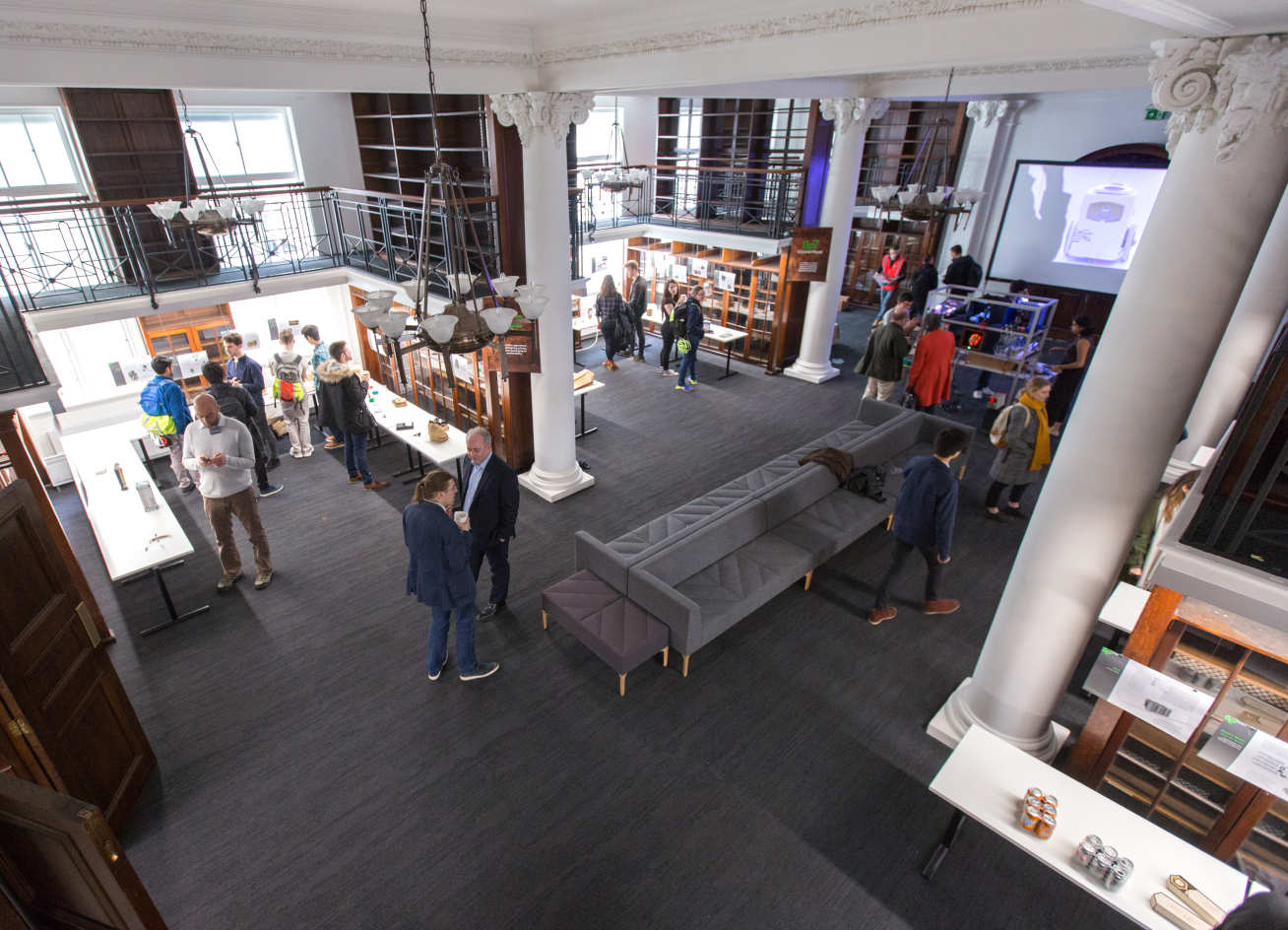
The Dyson School of Design Engineering, launched in 2014, is the newest Engineering Department at the College. It offers an undergraduate programme in Design Engineering, as well as two Masters programmes which are delivered jointly with the neighbouring Royal College of Art.
PhD students within the School are also exploring diverse areas within the themes of human factors and industrial design, engineering product development, and autonomous systems and manufacturing.
Robot innovations
Paolo Ruegg, an undergraduate student from the School, is a member of a team designing a 'skin' for robots, called Sio, that would make them more aware of and responsive to their surroundings. This would help them collaborate better with humans.
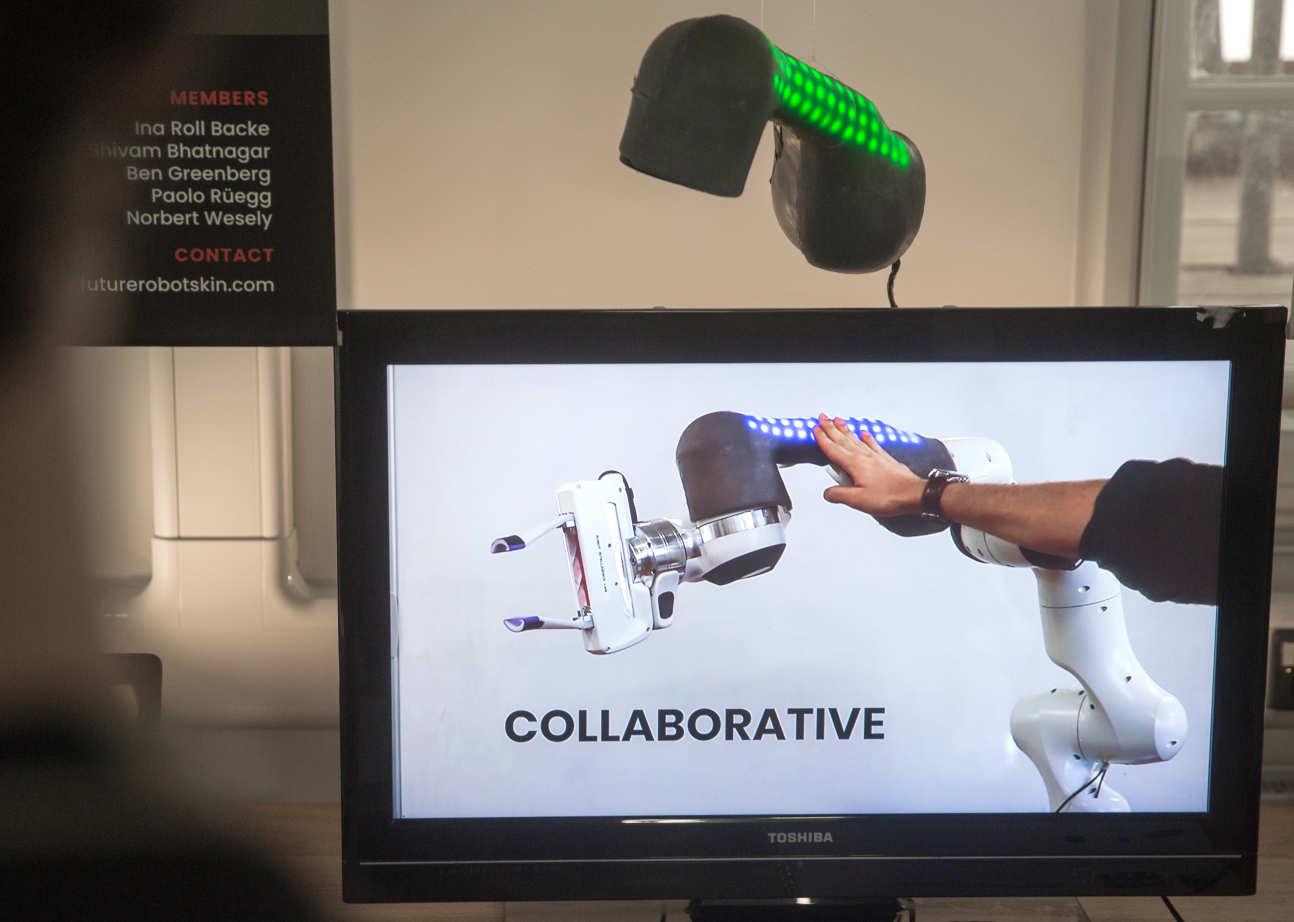 He said: “Currently, robots used in industry are not very good at understanding their environments. This makes it difficult – and potentially dangerous – for them to fully interact with humans.
He said: “Currently, robots used in industry are not very good at understanding their environments. This makes it difficult – and potentially dangerous – for them to fully interact with humans.
“We’re developing a skin that would give robots a sense of touch, so that they can better understand what’s around them.”
A robot would be able to tell if something is about to fall from its grip and tighten its hold, as well as better understand what humans want it to do through touch, Paolo explained.
Social media drones
Leah Pattison, also an undergraduate, is part of a team imagining a future form of social media involving tiny personal drones.
Called Eleos, the drones would act as small electronic companions – reacting and responding to a user’s change in mood by changing colour or flight pattern. They would also be able to interact with other people’s drones, and are designed to promote self-expression, emotional intimacy, and help users embrace face-to-face interaction.
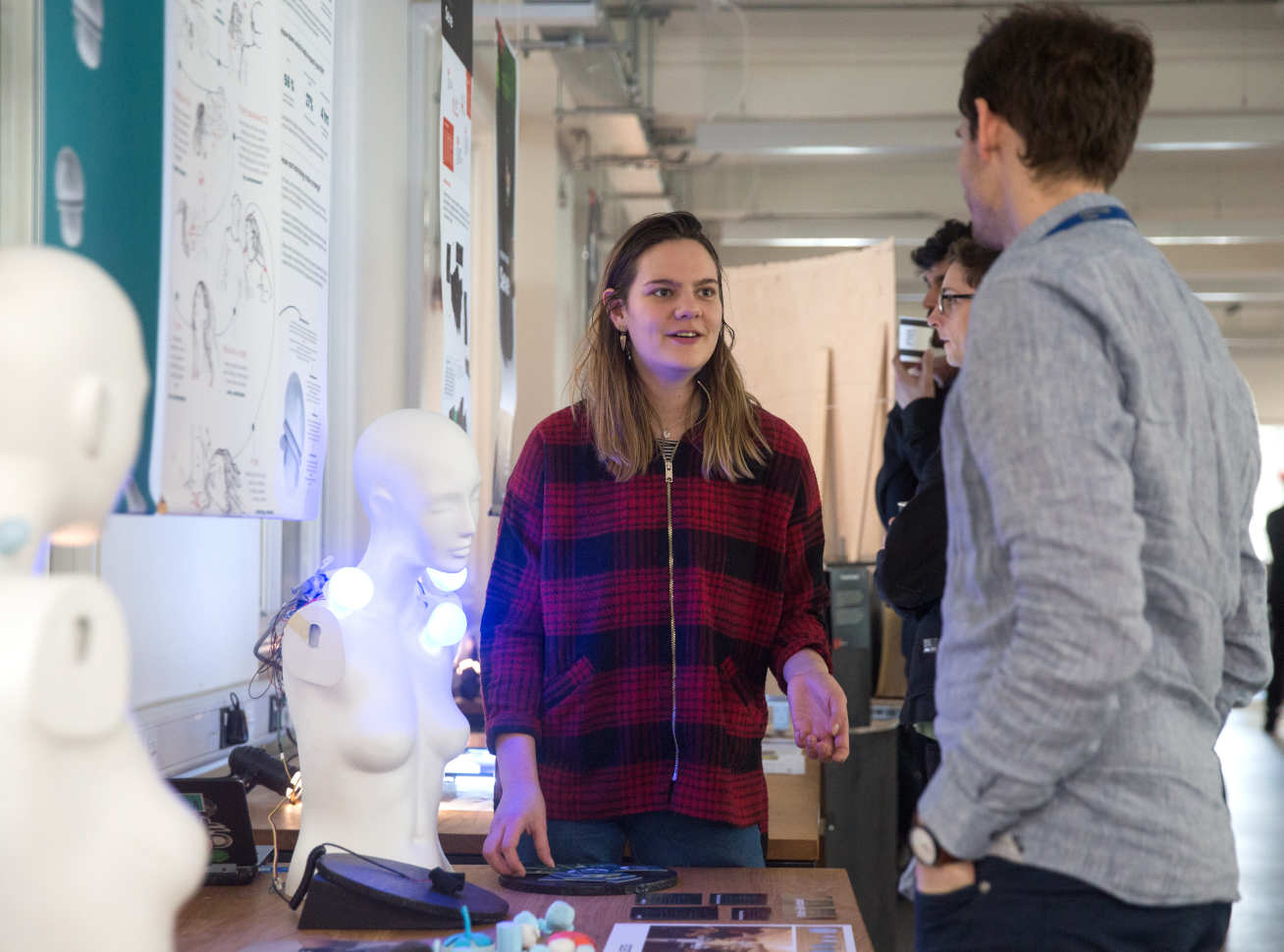
The curious idea grew from trying to combat the social isolation felt by many young people. Leah explained: “Social media has become ubiquitous – used by young people across the world. However despite this increased digital connectivity, research suggests that young people today are more isolated, lonely, and emotionally disengaged than ever before.
“We set ourselves the challenge of designing a way that social media could compliment face-to-face interactions and encourage social participation.
“Of course the drones could be turned off if you didn’t want to share your emotions at that particular moment. We could see them being used primarily in settings like concerts, performances or parties – where they can fly around the room interacting with others and their environment in a playful way.”
Adaptable robotics
PhD student Angus Clark is developing adaptable and malleable robotic limbs, capable of being both hard and rigid, or soft and flexible, depending on need.
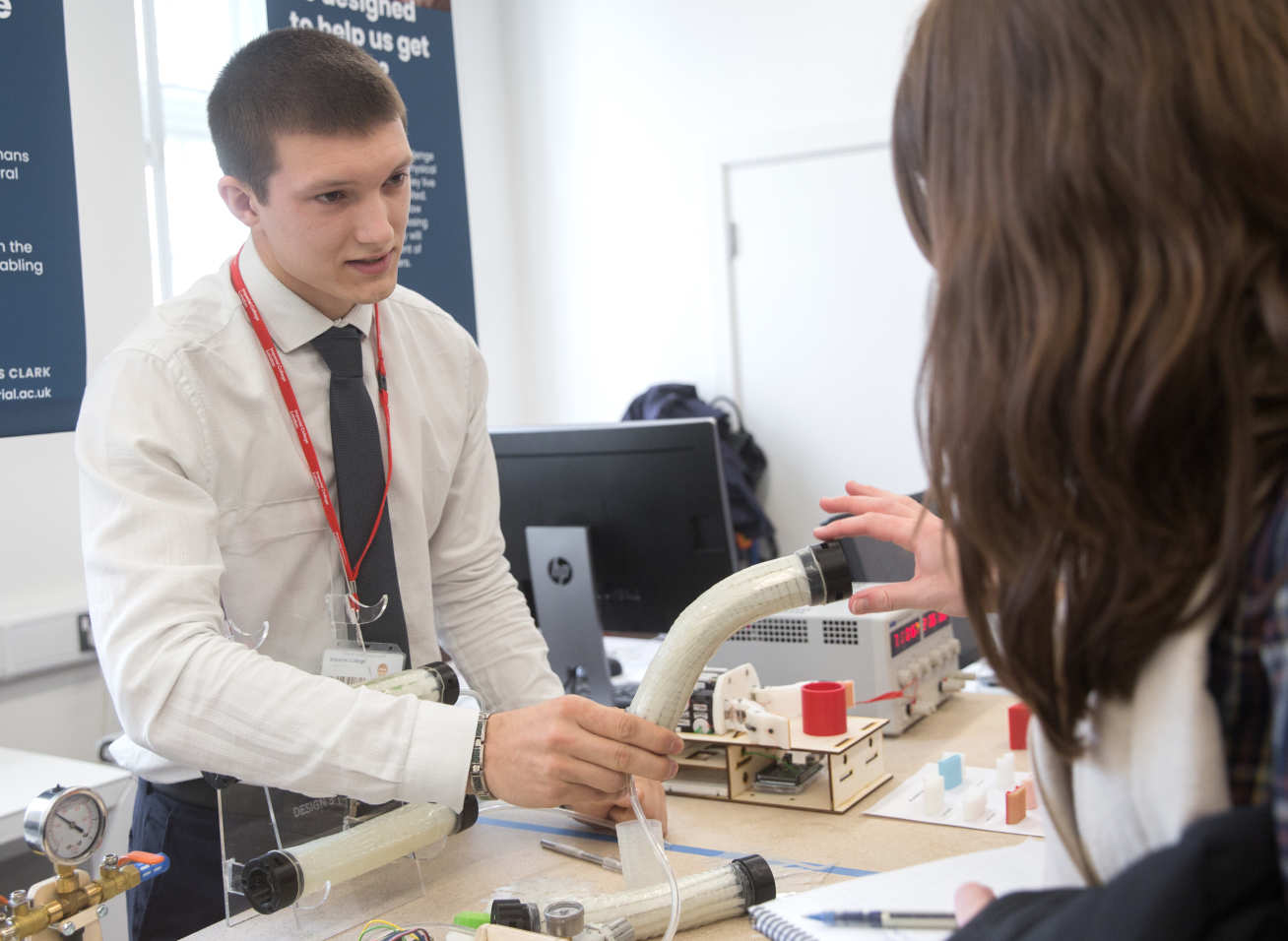
Hard robotics, such as these used in industry, are fast, precise and strong, but are not very adaptive to new environments or tasks and struggle to navigate obstacles. On the other hand soft robotics –such as those used in colonoscopies – are able to easily move around but lack precision and strength, he explained.
He’s looking to develop robotics that combine the best of both worlds. They would be especially useful for robotics used in remote or difficult to reach locations – such as other planets, where robots can come across unexpected obstacles and need to be able to adapt.
Article text (excluding photos or graphics) © Imperial College London.
Photos and graphics subject to third party copyright used with permission or © Imperial College London.
Reporters
Deborah Evanson
Communications Division

Contact details
Tel: +44 (0)20 7594 3921
Email: d.evanson@imperial.ac.uk
Show all stories by this author
Thomas Angus [Photographer]
Communications Division

Contact details
Tel: +44 (0)20 7594 2858
Email: t.angus@imperial.ac.uk
Show all stories by this author


